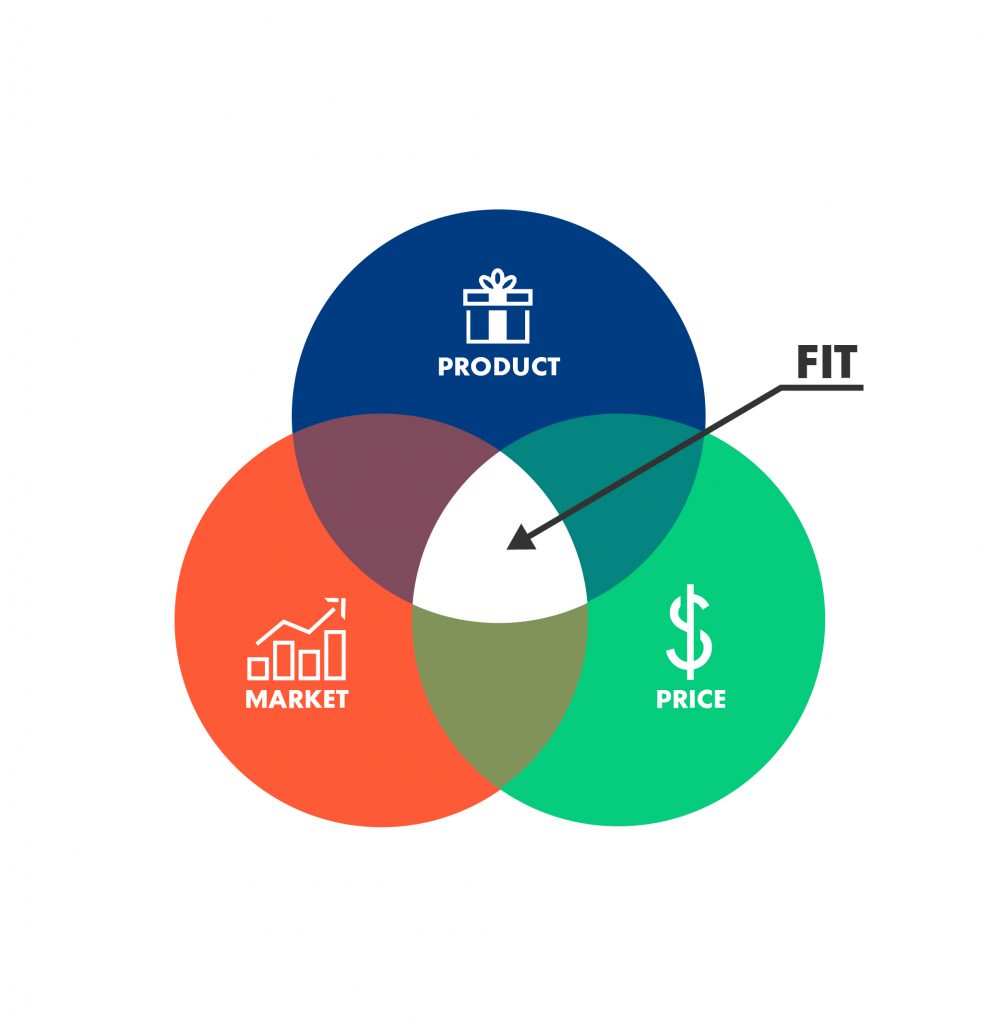Unsure if your SaaS product idea is the right fit for your market?
It’s time to find product-market fit!
In this post, you’ll learn what product-market fit is and how you can achieve it.
Let’s begin.
What Is Product-Market Fit in the SaaS and Micro-SaaS Worlds?

Product-market fit means your new product successfully solves a major problem for a good market segment.
It’s a vital component for SaaS and micro-SaaS founders since it talks of a situation where there’s a growing demand for your product as a result of you meeting the underserved needs of your given market.
It’s hard to know when you’ve created a product that fits your potential customers, but there are many indicators:
- A growing market demand
- A growing customer retention rate
- An increasing number of new customers
- Positive word-of-mouth referrals
- Higher market share
- Increasing revenue
Why Is Good Product-Market Fit Important?
Anyone planning to launch their startup in the SaaS or micro-SaaS industry must spend considerable time validating the idea for their product or service and achieving product-market fit.
Here’s why:
1. To ensure long-term profitability
You wouldn’t want to be one of those viral founders with a product team whose positive feedback from customers died off in just a few months.
Achieving product-market fit will ensure your software can cater to customer needs even in the long run.
2. To avoid wasting time and resources

If you launch your minimum viable product (MVP) without doing any analysis upfront, it’s highly likely that you’ll lose lots of valuable resources and time.
This is because creating and launching a real product requires time and capital. And if it turns out you don’t have product-market fit later on, it can be a significant loss.
On the other hand, if you figured out as early as in your market research stage that your product is not something your target market would be willing to pay for, you can drop the idea or change your value proposition right away without wasting further resources.
3. To grow your customer base at low costs
The process of finding product-market fit means your target customers flock to your core product without you needing to invest high costs in acquiring them.
For example, ChatGPT was able to find a product-market fit so good that it got its first 100 million customers within just two months.
Granted, not every product manager or micro-SaaS founder can launch a successful product like ChatGPT.
Still, if you’ve succeeded in determining product-market fit, you can significantly reduce your customer acquisition costs.
Lower customer acquisition costs mean you have more money to invest in other areas of product development.
How to Find a Product-Market Fit for Your Micro-SaaS Idea
Now that you understand why it’s essential to know how well your product answers a market need, it’s time to get into the process of finding product-market fit. Follow the 6 steps below:
1. Determine your target customer

When it comes to launching your product, it’s not enough to have an idea who your target audience is.
To determine product-market fit, you need to be able to describe well the paying customers who will likely try your product and help you grow your business.
Suppose you’re building a product that is an outreach management software.
You know that CEOs and decision-makers need it to ensure a consistent flow of leads.
But when you actually tested the product within your target market, you realized that CEOs generally outsource the outreach process to sales specialists.
In this case, it makes sense that your ideal target audience are not CEOs per se but salespeople.
It’s important, therefore, that you dig deeper and figure out the exact persona of your ideal customer.
2. Identify underserved customer needs and how your micro-SaaS idea can resolve that
Once you’ve identified your target customer, find the specific pain points they have and use that to define your value proposition.
After all, you can only rest assured that you have product-market fit if your product solves a problem that people find to be recurring.
Here’s a typical scenario:
Problem: The outreach management software available in the market doesn’t offer salespeople any way to collect leads. So, they have to prospect leads manually, which can be tiring and time-consuming.
Solution: Build an outreach management software with product features that include a prospects’ database that salespeople can use immediately.
In fact, you probably know what this existing product is today: Apollo.io.
Not only does it meet LinkedIn—which is today’s database for professionals—but it also lets salespeople export high-quality leads within a few clicks.
Clearly, adding this step to your product strategy can help you improve your product idea.
To do this, you can:
- Interview people to understand their struggles.
- Read negative reviews or comments.
- Read online forums, Quora threads, and subreddits.
3. Specify the features and develop your MVP prototype

After you’ve determined the initial features to get for your entire product roadmap, it’s time to start developing a minimum viable product (MVP).
The MVP is the not-so-fancy version of your software with at least one feature that sets it apart.
This is the mini version of your product that you’ll launch in the market to test the waters, and the only goal here is product validation.
Thus, it’s better to build the product as fast as possible with the minimal resources you have.
4. Keep an eye on your product analytics
You can only define the success of your product if you can measure product-market fit.
To this end, you need to set milestones and determine the numbers that will help you achieve them.
Take note that it’s easy to get caught up with vanity metrics like followers, likes, number of downloads, and social media mentions.
But while they are “nice to have”, they don’t show the real picture of how well a product aligns with your customers.
For example, the number of downloads is vague and doesn’t specify whether your customers are actually using your software or not.
It can be that they just downloaded the app but haven’t opened it since then.
It’s vital, therefore, that you focus on the two most important benchmarks:
- Retention – it refers to the number of active users who consistently use your software. For example, nearly 3 billion people use Facebook monthly.
- Usage time – it refers to how long people use your product. For example, people use TikTok on an average of 45 minutes every day.
A decent rise in the metrics you use for your SaaS or micro-SaaS likely indicates that a product-market fit is achieved.
Of course, these numbers have different meanings in different industries, so you need to determine your industry benchmarks.
For example, for eCommerce sites, you might want to look at your sales performance. For e-learning platforms, on the other hand, it can be the number of minutes watched, and so on.
You can also consider other benchmarks, like new users (which are different from active users) and the conversion rate of your freemium to premium subscribers.
5. Test your MVP with beta users

The next step is to get feedback from customers about your core product.
You have two ways to test it: free and paid.
If you have no problem with launching your product for free, you can publish it on platforms with a massive audience size.
An example would be Chrome Web Store, where you can make your micro-SaaS available for everyone so you can grow your customer base.
This is a good way to find numerous people who can test your product and leave their reviews.
But, if you want to see if potential customers would be willing to pay, try adding a pricing plan.
It can be a tiny fee they have to pay to become subscribers and access the coolest features.
Here are a few ways to collect beta users:
- Share your SaaS or micro-SaaS product on social media platforms.
- List it on ProductHunt.
- Create a landing page where you can drive direct traffic.
While it’s a good sign to have many interested beta users, a small relevant group is much more effective to test whether your product is something that customers say they would actually pay for.
Find a few people who will genuinely try your product and give honest feedback.
6. Track customer feedback so you can turn your software into the best product available
Remember the in-app survey form you created while developing your MVP?
Ask your beta users to fill it out so you can stay on the right track.
The survey should contain open-ended questions in addition to multiple choice questions.
You can also try Sean Ellis’ PMF test to determine whether or not there’s a strong market demand for your product.
According to Sean, if you get 40% or above satisfaction ratings, you’ve actually achieved a market fit for your product.
But don’t just leave it to surveys. Reach out to each user individually and ask if they’d be willing to get on a call with you.
When you interview them, ask the right questions to help you define the right product process to prioritize.
This way, you can keep improving your product using market feedback.
The quicker you work on the suggestions they iterate, the faster you can make your product fit your market.
Product-Market Fit FAQs for Aspiring Micro-SaaS Entrepreneurs
Should you ensure that product-market fit works before scaling your micro-SaaS?
Yes. Finding product-market fit is a process, and you need to know that you have it before moving on to scaling your product development.
How can you measure product-market fit?
If important metrics like customer retention rate and usage time keep increasing without you putting in massive efforts, it’s a sign that your product-market fit doesn’t pose a problem for your business.
How long does it take to achieve product-market fit for micro-SaaS?
Based on your market research and audience size, it can take anywhere from months to years. However, the acceptable time frame is 1 ½ to 2 years.
Final Thoughts on Finding Product-Market Fit
Evidently, there’s no quick method to finding product-market fit.
Take any revolutionary product, for example.
Facebook, Google, and Apple were launched with minimal resources but were constantly developed based on customer feedback.
So, prioritize learning, and with whatever resources you have, launch a minimum viable product you can continuously adapt.
But that doesn’t mean you have to spend years trying to figure out things by yourself.
At Symalite Labs, we help aspiring founders launch and build profitable SaaS and micro-SaaS businesses.
Give us a nudge, and let’s discuss how we can help turn your ideas into a reality.

